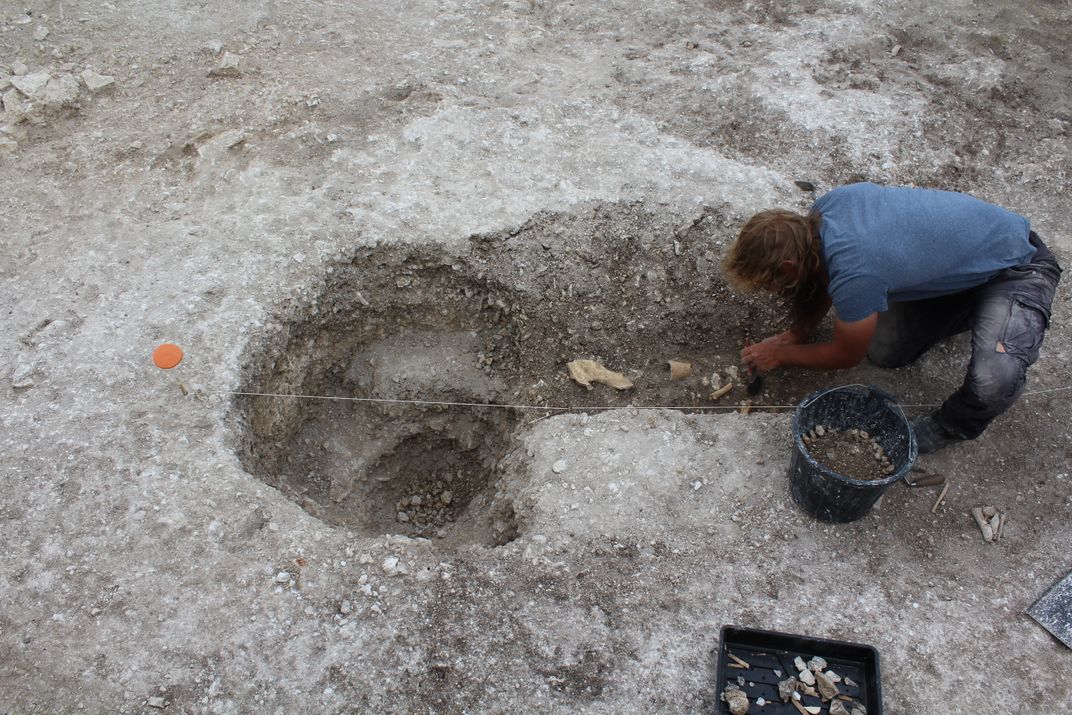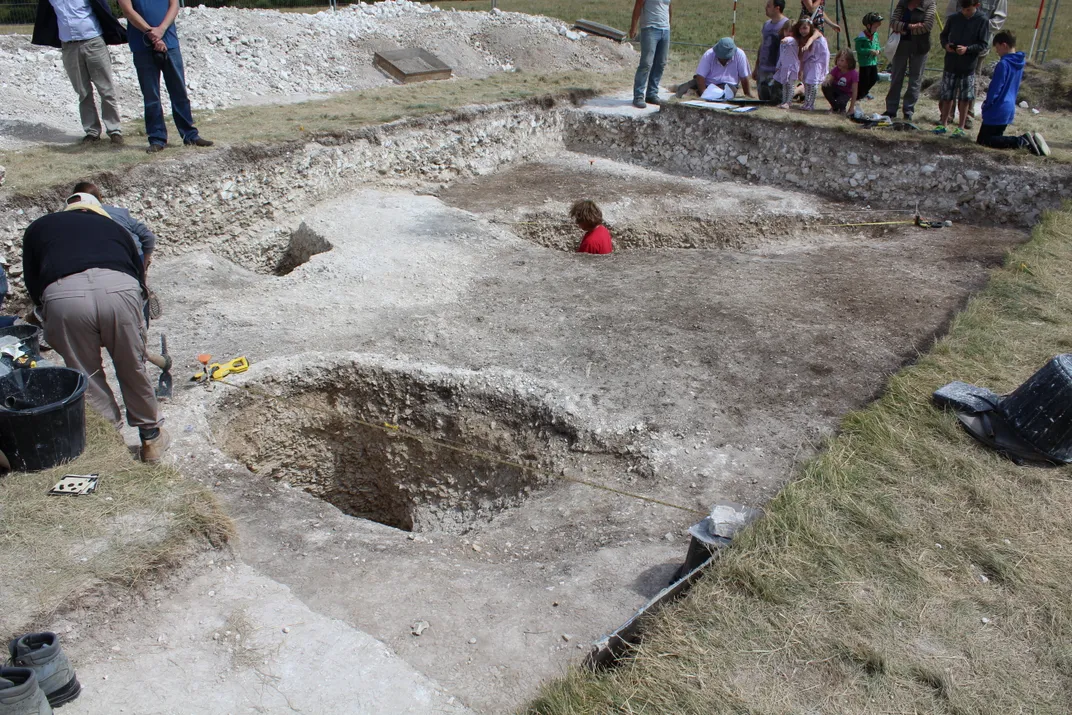The So-Called “Superhenge” Was Made of Wood, Not Stone
New research shows that the ancient structure was also taken down in a hurry
/https://tf-cmsv2-smithsonianmag-media.s3.amazonaws.com/filer/84/70/8470df88-887f-4874-b598-d6df3b1dfb7e/img_0562.jpg)
For years, researchers have suspected that the region nearby Stonehenge was once home to more Neolithic stone monuments. When anomalies appeared in a set of scans taken last year by archaeologists working with the National Trust, they thought they might have found that evidence—it appeared there could have been a massive “Superhenge” made up of almost 100 standing stones, Madison Margolin writes for Motherboard. But since then, excavations at the site known as Durrington Walls failed to find any proof of the stone monoliths. Instead, National Trust archaeologist Nick Snashall and her colleagues discovered large pits that once held timber posts that were inserted and removed vertically before being filled in with chalk rubble, the BBC reports.
"For some strange reason they took the timbers out and put up the enormous bank and ditch that we see today," Snashall tells the BBC.

While it’s still unclear what the site’s original purpose was or why it was dismantled, one theory posits that it came at a time of religious tumult in prehistoric Britain. According to analysis of the Durrington Walls site, it appears that its builders began taking it apart shortly before it was completed, David Keys reports for the Independent. At the same time, just two miles southwest, Stonehenge itself was being converted from a larger circle of standing stones to the more constrained monument of massive monoliths that still stands today. Meanwhile, two other massive prehistoric religious monuments at Avebury and Silbury Hill were being constructed or expanded.

Researchers aren’t sure whether all this construction is related, but considering that they all occurred around the same time period in the same region, it’s certainly a possibility. One thought is that the shifting construction at these sites came from a clash of cultures, such as the arrival of a new society that archaeologists have dubbed the “Beaker culture,” Keys reports. It’s also possible that the builders at Durrington Walls were given new plans for the site by new religious leaders who wanted to literally bury the past.
“The new discoveries at Durrington Walls reveal the previously unsuspected complexity of events in the area during the period when Stonehenge’s largest stones were being erected—and show just how politically and ideologically dynamic British society was at that particularly crucial stage in prehistory,” Snashall tells Keys.
With excavation at the site still ongoing, it might only be a matter of time before new clues about its history will be uncovered.